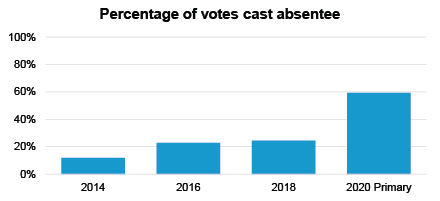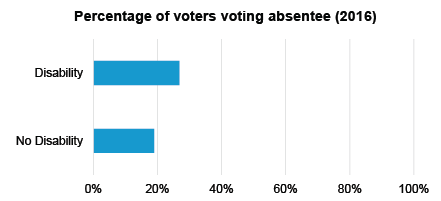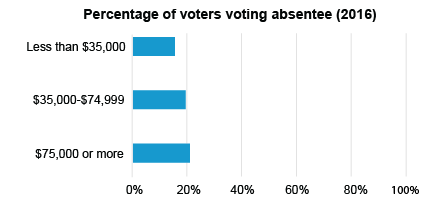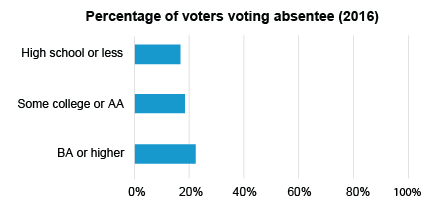We know Minnesotans take pride in our state’s high voter participation, and the impressive turnout in the August 2020 primary was no exception.
Minnesota hasn’t typically had a high level of absentee voting compared to other states. In a U.S. Census Bureau survey of 2016 voters, 20% of Minnesotan voters reported voting absentee, lower than 36 other states and the District of Columbia. But, as the COVID-19 pandemic makes many voters wary of traditional polling places, that pattern could shift.
Mail ballot applications have skyrocketed across the country in 2020. In Minnesota’s August 11 primary, 59% of voters chose to cast their ballots either early or by mail, far exceeding the 24% who voted absentee in the two most recent national general elections.

Which voters vote absentee?
We don’t have demographic information on 2020 primary voters yet, but, traditionally, older adults have been the most likely voters to cast absentee ballots. In 2016, more than one in three voters over 65 voted absentee, compared to less than one in five voters under 65.
Minnesotans with a disability were also much more likely to vote absentee in 2016 than those without (27% vs 19%).

There has also been a slight correlation with income and education, with voters with higher levels of educational attainment and higher income being more likely to vote absentee in elections prior to 2020.


2020: Geographic and partisan divides, and the COVID-19 factor
Historically mail-only precincts drive geographic patterns
There has been some speculation leading up to the 2020 general election that there will be geographic and partisan divides in who votes by mail, as mail voting has become politicized at the national level. The 2020 primary didn’t appear to show a large geographic split in Minnesota. Some Minnesota cities and towns use mail-in voting by default, and the percentage of registered voters in these vote-by-mail precincts was by far the best predictor of a county’s absentee vote share in the 2020 primary. Non-traditional voting was up everywhere in 2020, but the geographic distribution of absentee ballots looked roughly similar to 2016.
Some evidence of a partisan gap
After controlling for mail-only precincts, there was a slight partisan divide in absentee voting in the 2020 primary. Counties with more voters participating in the DFL U.S. Senate primary also had a higher share of absentee voters. There is not necessarily evidence that the partisan effect is growing, however, since DFL vote share was a meaningful predictor of absentee voting in 2016 as well.
Large COVID-19 outbreaks may play a role
Controlling for both mail-in precincts and DFL vote share, counties with higher rates of COVID-19 cases saw more mail-in voting as well. Nobles and Pipestone counties in the southwest and Mower in the southern region have seen high rates of COVID-19 cases and also saw among the largest increases in mail-in voting from the 2016 general to the 2020 primary.
As the coronavirus pandemic changes how Minnesotans vote, it is also impacting voter registration events, door knocking, and other traditional get-out-the-vote activities that attempt to reach non-voters. Who are the non-voters in Minnesota? Check out our next segment in this series!
